Albert Estrada-Rius
Throughout history, coinage has been one of the expressions of power most highly valued by public authorities. Moreover, by circulating from one hand to another, it became an extraordinarily effective means of propaganda. This explains the care with which rulers have projected images and messages on it. It is such an obvious and accessible means that issuing authorities have been repeatedly challenged, and the coinage has been subverted by using it as a platform for protest messages.
The countermark
How? Often, it has merely been necessary to countermark messages on coins. At other times, pieces in opposition to the official coinage have been put into circulation. The Numismatic Cabinet of Catalonia’s collection conserves examples of this political use of coinage, associated with recent history.
Examples of Spanish pieces of eight countermarked by the British and Portuguese to validate them as their own coinage
Countermarking has occurred since Antiquity and involves engraving, with manual or mechanical means, signs or images on the original field of the coin. This was sometimes done by the actual issuing authority, for example, to alter the coin’s value without having to remint it; at other times, to appropriate highly valued foreign currencies, as the British and Portuguese did with Spanish pieces of eight. In the last 200 years different groups of protesters have acted this way to further their ideas, and they have left many testimonies to it, some of which we shall comment on in chronological order.
Subversive pieces
The short-lived King Amadeo I was the subject of an intense campaign to discredit him that reached his five-peseta coins, with the engraving of the word MEMO (idiot) over the coin’s inscription. At the end of the Sexenni Revolucionari (no en anglès) (six revolutionary years), the Cantonal Revolution broke out, the worst events of which took place in Cartagena. There, the besieged Cantonalists defied the State not by countermarking the previous coinage but by minting five-peseta silver coins with an inscription against the “centralist” forces. At the same time, the Carlist pretender, Carlos, Duke of Madrid, established his court at Estella and placed five-peseta coins in circulation that also challenged the official ones.
From the government’s point of view, they were all illegal and subversive, although, in practice, the metal, the module and the street value of all of them was the same, and those issuing them regarded them as good.
Some examples from the series of medals struck at Casa Vallmitjana in Barcelona by order of the Unió Catalanista, 1900
During the long period of the Bourbon Restoration, there is evidence of some episodes of the use of imitation coins for political ends. For example, in 1900 the Unió Catalanista, founded in 1891, placed in circulation a series of medals in gold, silver and copper, identical in metal, module and value to the monetary standards of the time, with the aim of them circulating as a patriotic coinage.
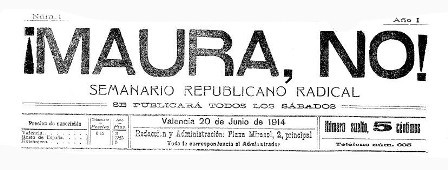
Newspaper masthead and small-value coins with the political slogan ¡Maura no! spread in 1909
In the majority of cases, however, the coinage was simply subverted by countermarking a relatively coarse message in the field. One of the clearest cases was the exploitation of the coinage in the campaign against Antonio Maura, then the president of the government, by the left-wing front, which was opposed to the heavy repression following the Tragic Week (1909). In the collection there are seven examples of Spanish copper coins with the countermark MAURA / NO and only one with the inscription VIVA MAURA / SI / 1909. This latter example gives us the interesting counterpoint of the president’s supporters hitting back in the same way.
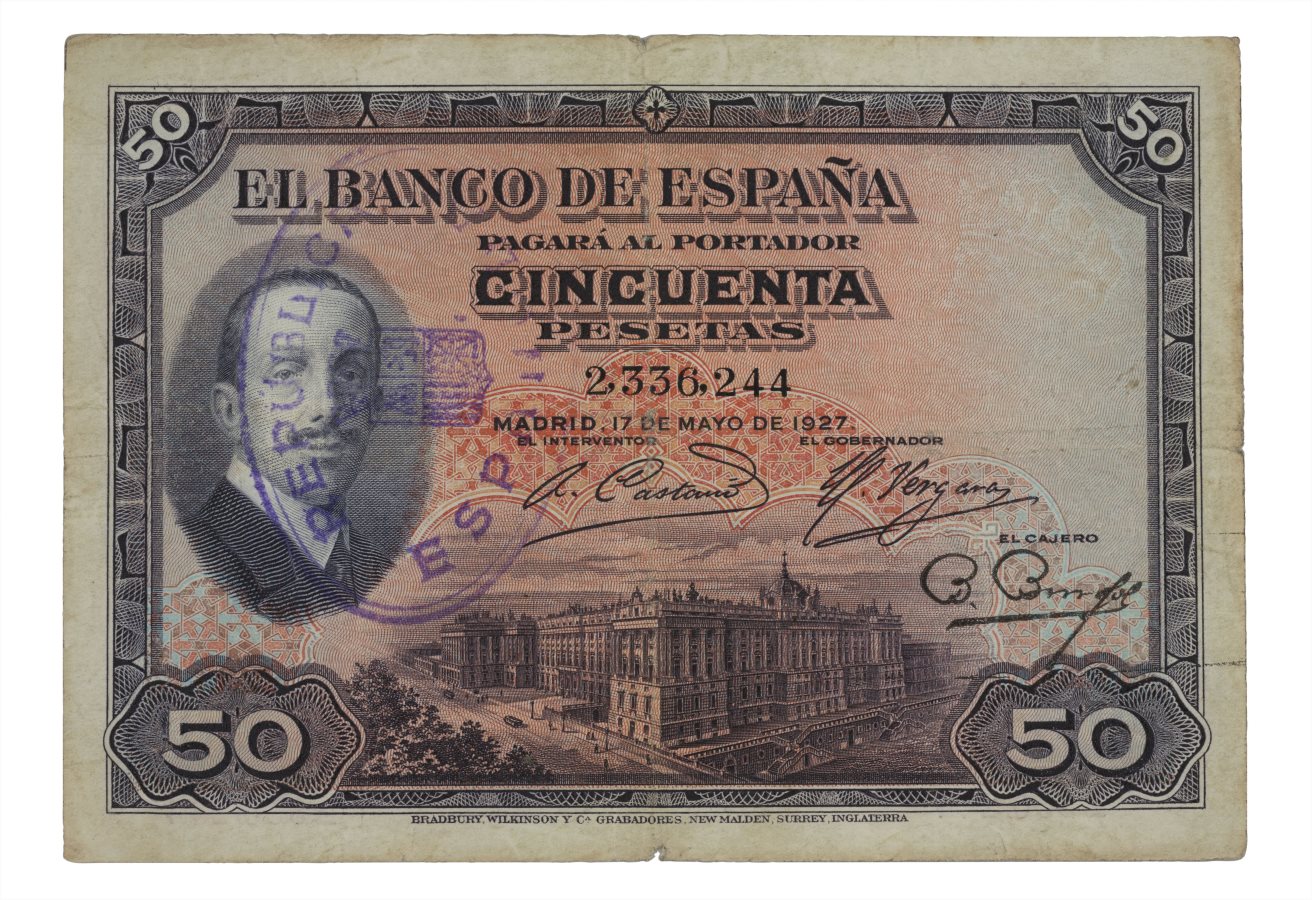
Bank of Spain 50 peseta banknote with the badge of the Republic stamped over the image of Alfonso XIII in 1931
Nor did the king escape the people’s anger and on one coin MORI / EL REY (death to the king) can be read.
The proclamation of the Second Republic in 1931 and the fact that the pre-existing coinage was still in circulation led, as a provisional measure, to the stamping of the coat of arms of the Republic and the legend REPUBLICA ESPAÑOLA, in violet ink, over the bust of Alfonso XIII on 50-peseta notes. These were the only Bank of Spain banknotes on which the king’s image appeared, seeing as, in principle, the image of the monarch was reserved for coins and not paper banknotes.
Small-value coins with political countermarks promoted, respectively, by the Socialist Youth and Esquerra
Republicana de Catalunya after the Asturian miners’ strike of 1934 had been crushed
The social tensions in the new regime did not take long to emerge and political likes and dislikes were expressed in the messages engraved on small change, that which circulated everywhere in everyday life. Inscriptions such as FUERA FALANGE / Y LA CEDA are documented.
After the Asturian miners’ strike of 1934 was crushed, the Socialist Youth demanded an amnesty for those condemned, having the inscription AMNISTIA J. * S. engraved massively on copper coins, while the same was done in the circles of Esquerra Republicana de Catalunya, but with the slogan VISCA CATALUNYA LLIURE.
Various propaganda inscriptions on a wall and small-value coins with slogans of the CNT / FAI from the Civil War period
The outbreak of the Spanish Civil War led to an increase in the disagreements among union movements in the territory controlled by the government of the Republic. The phenomenon of countermarking small copper change with political and electoral slogans continued, as can be seen in the collection. Examples of this are VIVA LA CNT, CNT / OBREROS / NO VOTAR / FAI. There are also some with the initials of the Partit Obrer d’Unificació Marxista, the POUM.
During late Francoism the phenomenon reappeared and there are frequent countermarks such as PUJOL, a movement promoted by the Acadèmia de la Llengua Catalana in support of Jordi Pujol, imprisoned in 1960, or JD 1975, corresponding to the Junta Democràtica. During the Transition the countermarks VOTA NO 1978, opposed to the Constitution, or TEJERO, in support of the colonel who led the failed coup d’état on 23 February 1981, appeared.
This kind of political use of the coinage has lasted to the present day. One instance is the campaign that has stamped euro banknotes with various inscriptions demanding independence.
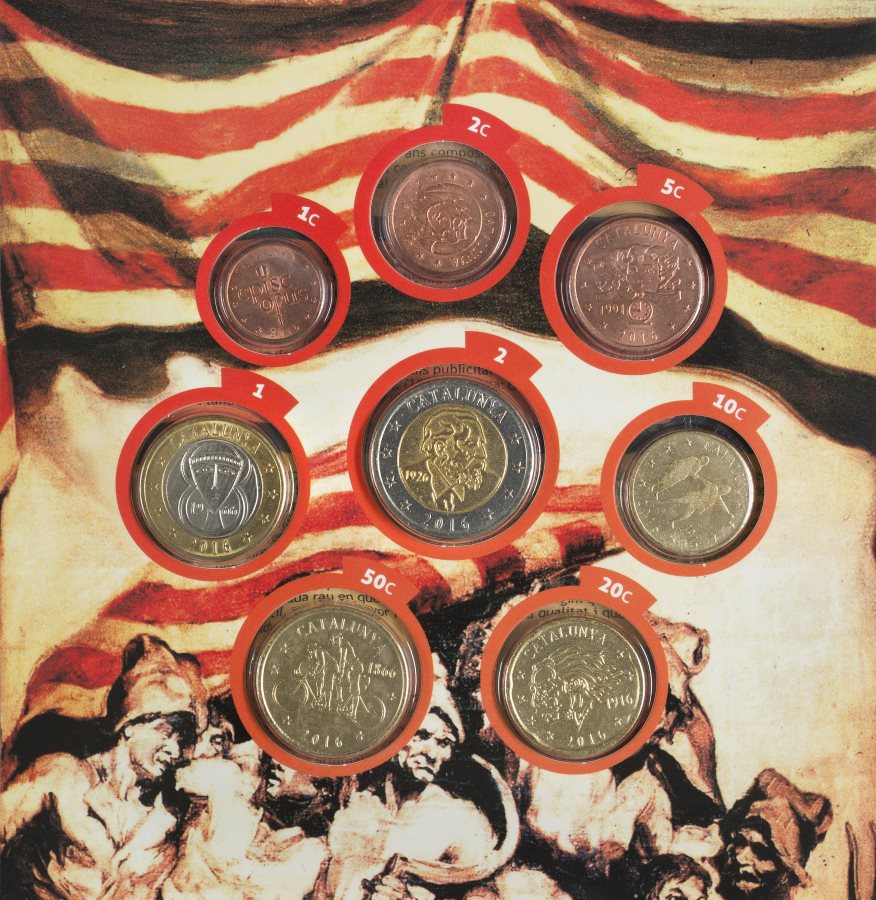
Wallet with one of the sets of fantasy euros issued by the Gremi de Filatèlia i Numismàtica every year since 2014

Imitation 500 euro banknote with political denunciations thrown by Josep Garganté, Barcelona City Councillor for the CUP, in the council meeting on 24 July 2015
Finally, other variants of the political use of coinage are the preparation of different forms of monetary proofs, inventions or fantasies, for the purpose of supplying the collectors’ market with pieces against a protest or patriotic backdrop or, directly, with a wish for political censure. In the first case, there are the annual issues of euro proofs since 2014 as the result of an agreement between the Generalitat de Catalunya and the Gremi de Filatèlia i Numismàtica de Catalunya. As an example of the latter purpose, we can point to a very recent case: the imitation 500 euro banknotes that the city councillor for the CUP Josep Garganté threw into the air in the Barcelona City Council meeting on 24 July 2015 to protest against the project for Barcelona to be a candidate to host the 2026 Winter Olympic Games.
Related links:
Uprisings. Museu Nacional d’Art de Catalunya, Barcelona. Exhibition curated by Georges Didi-Huberman, 24/02/2017-21/05/2017
Soulèvements. Jeu de Paume, París. Exhibition curated by Georges Didi-Huberman, del 8/10/2016 al 15/01/2017
Gabinet Numismàtic de Catalunya

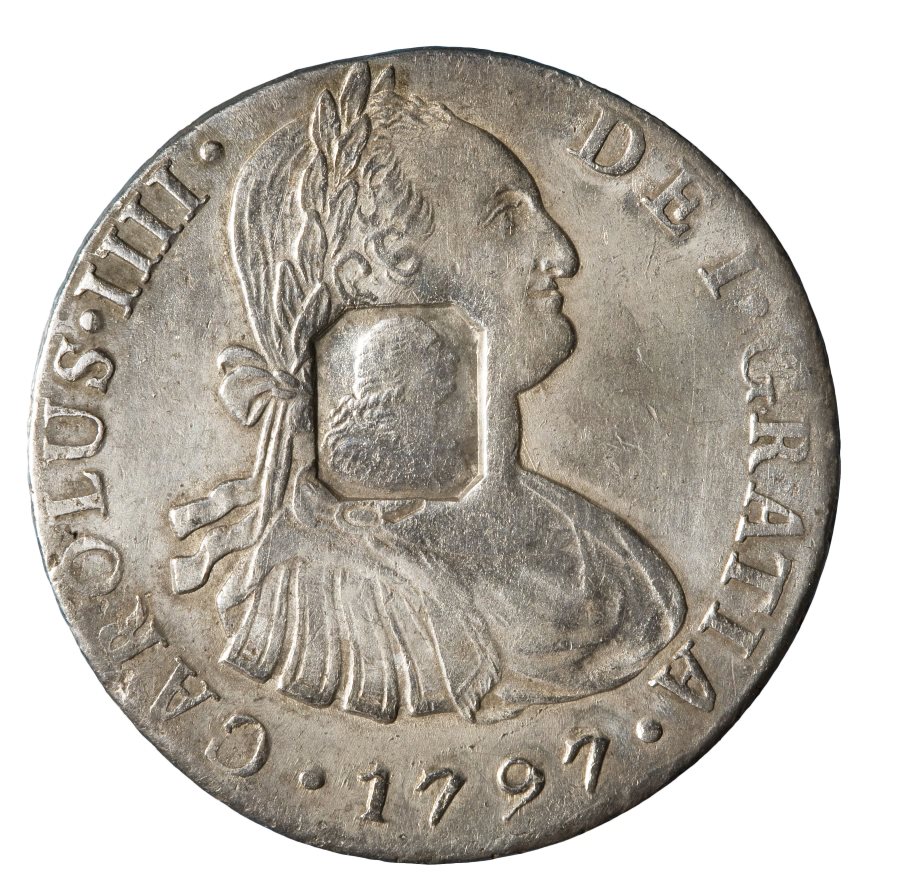
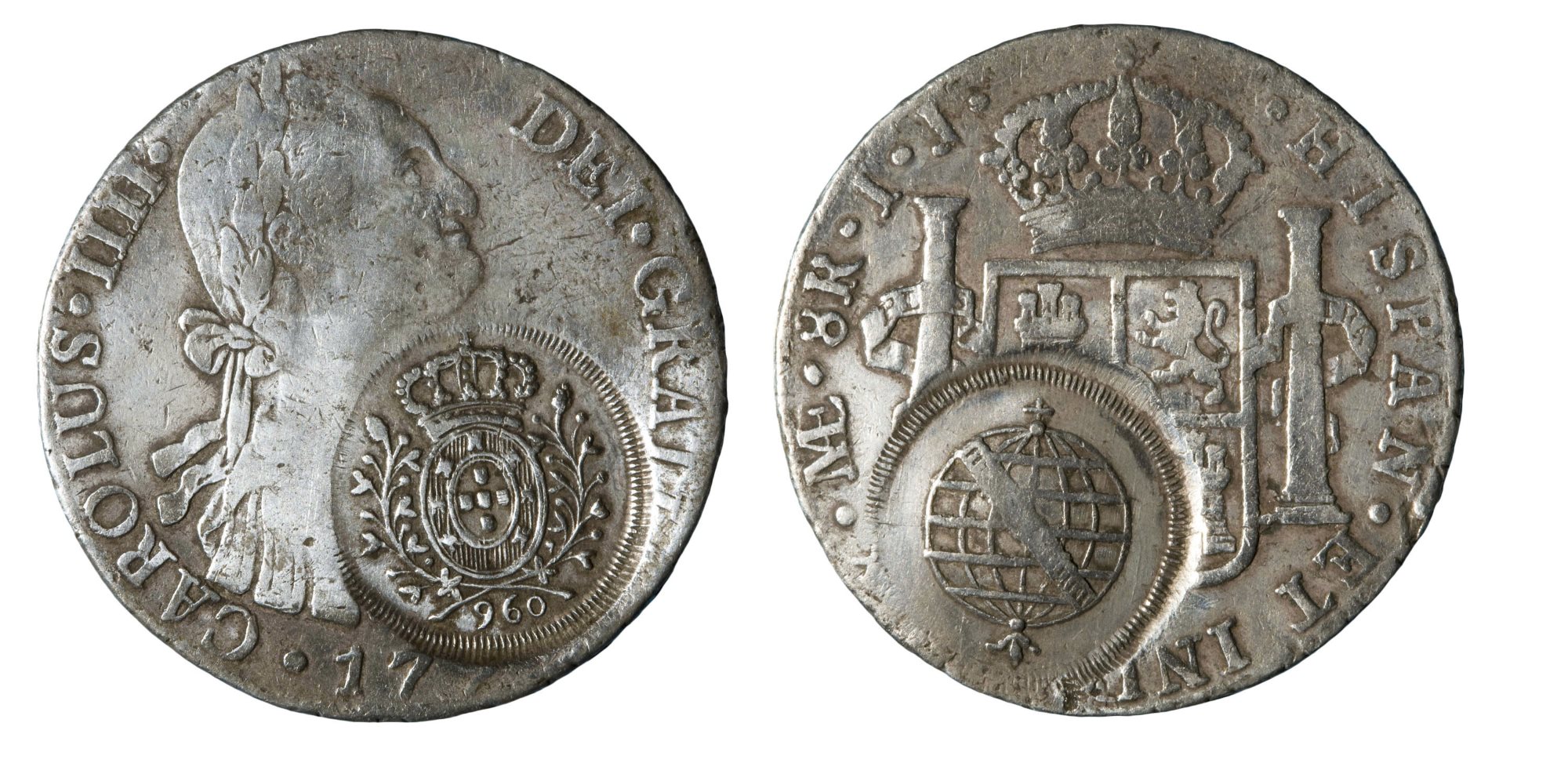
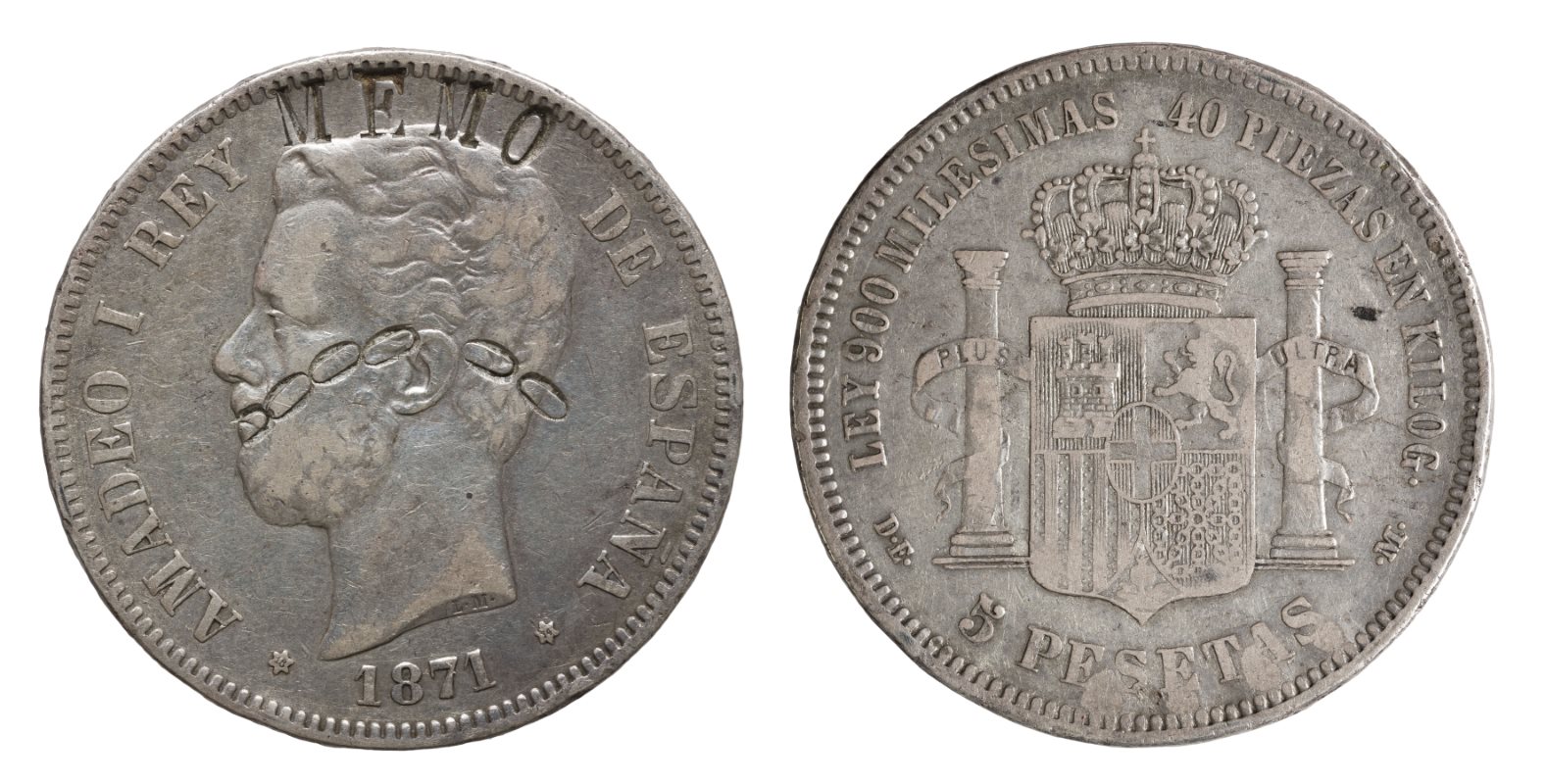


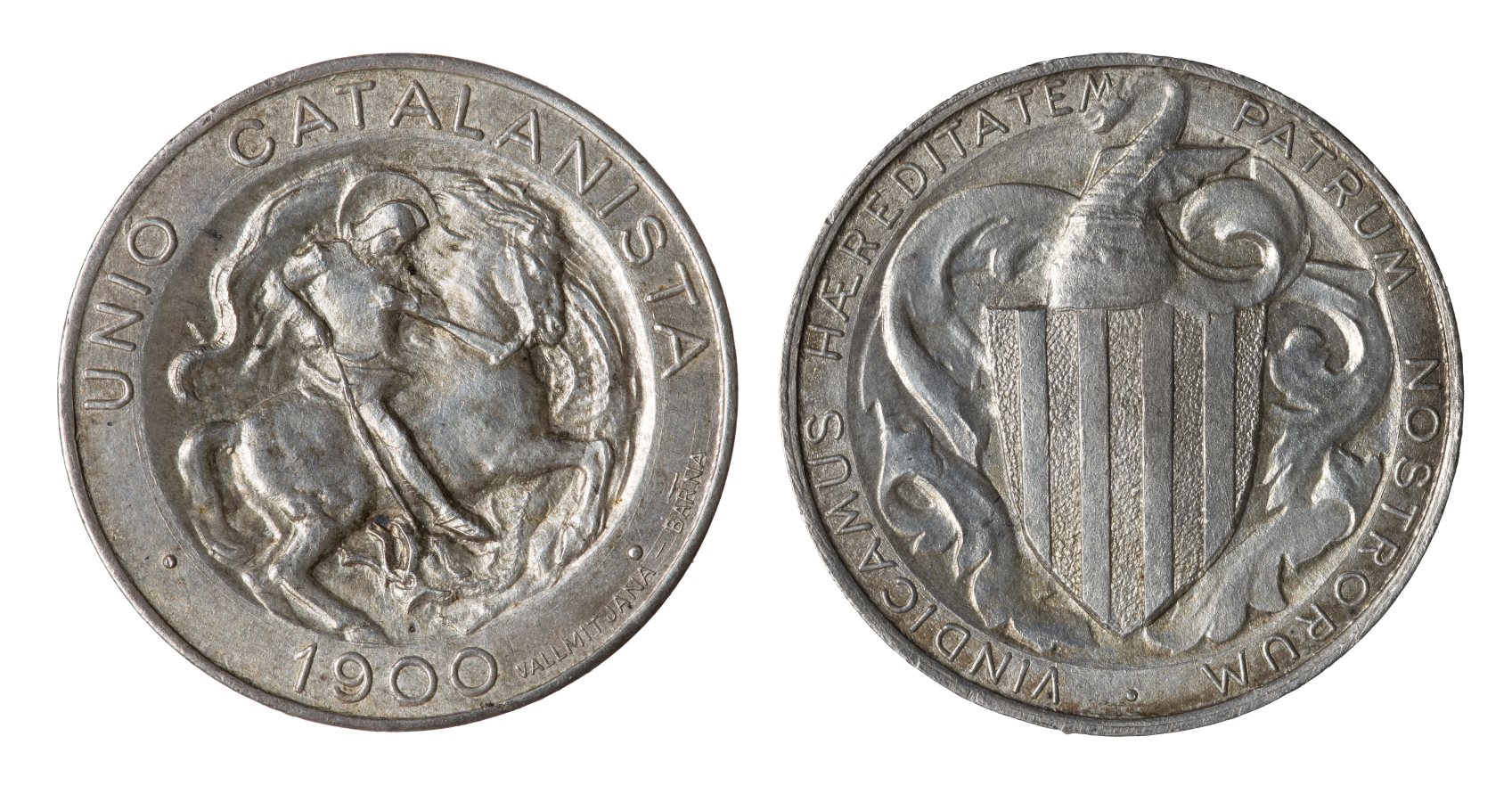
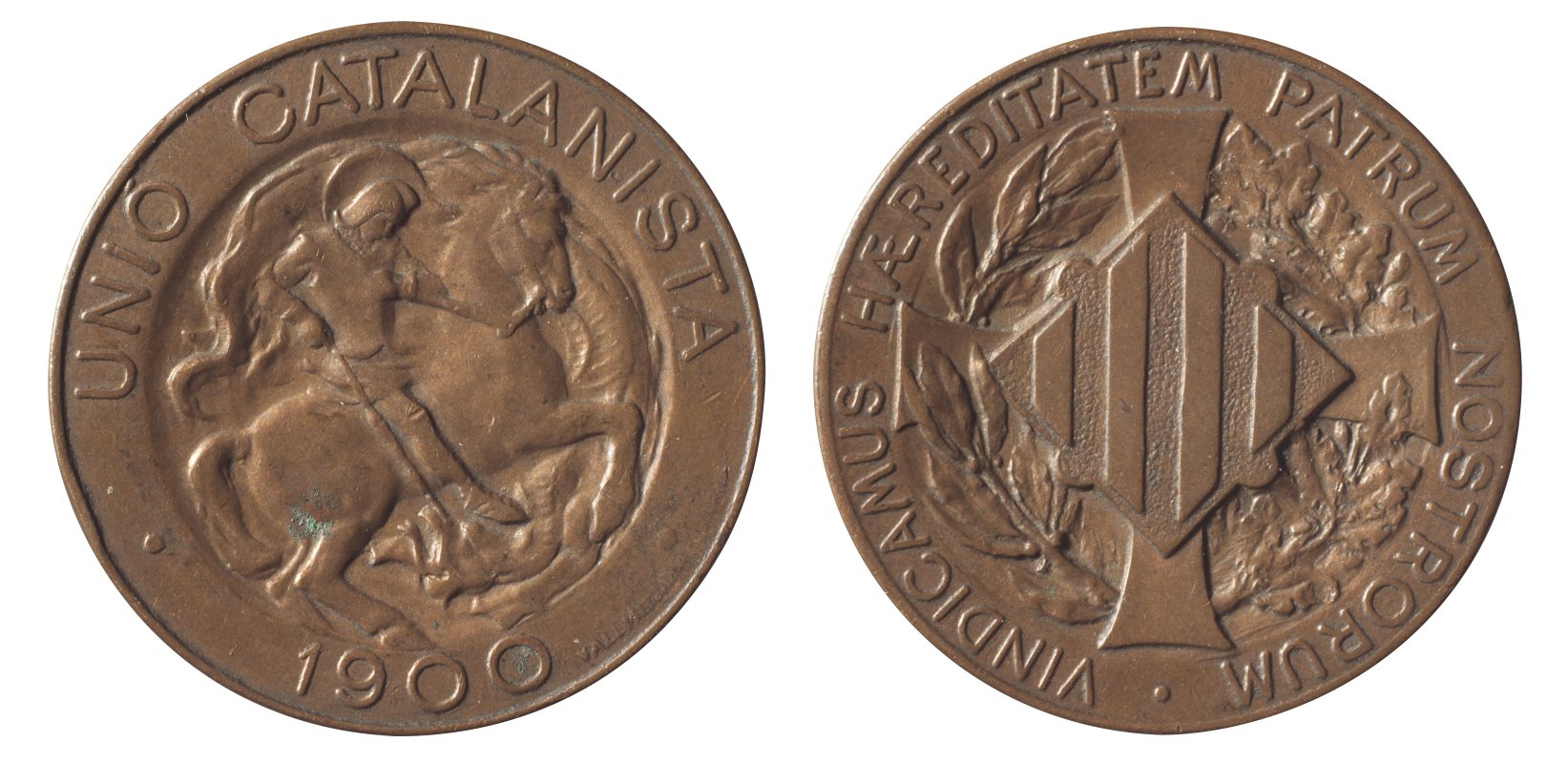
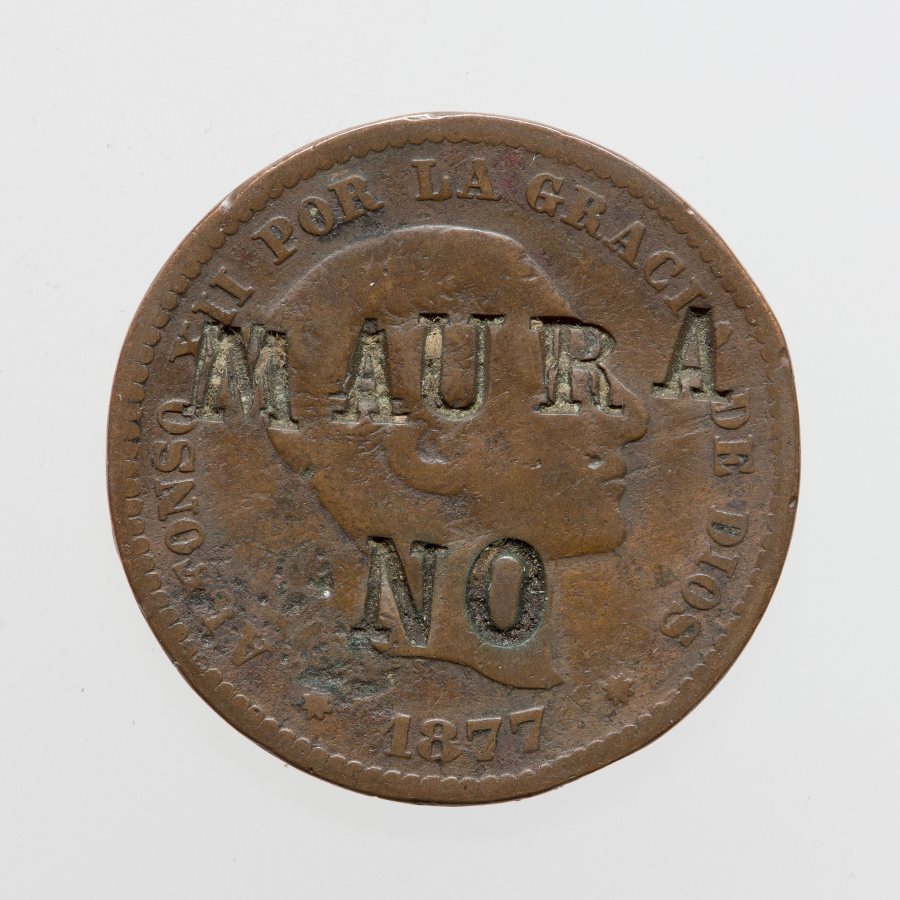
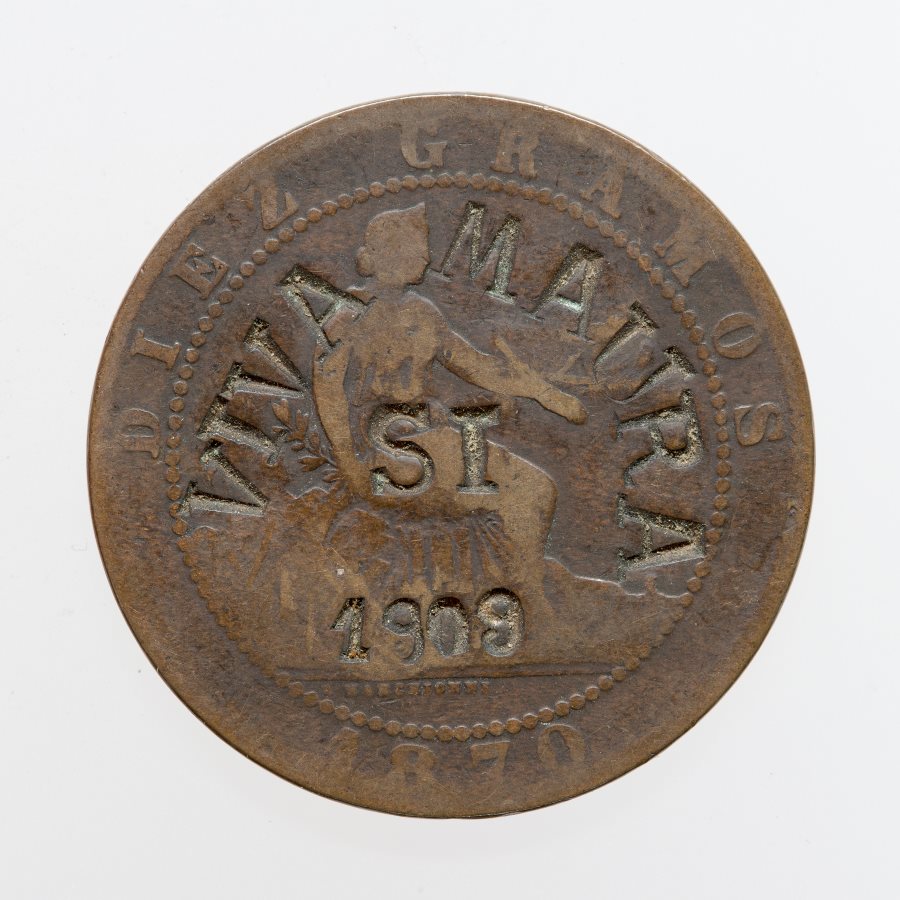

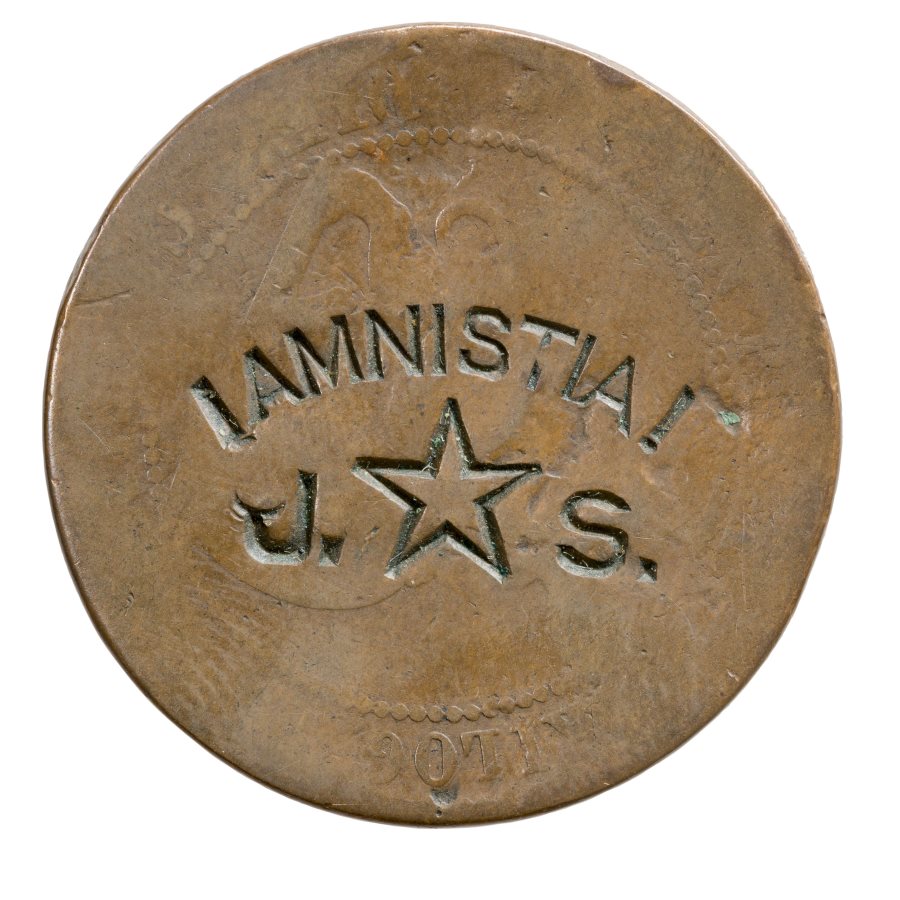
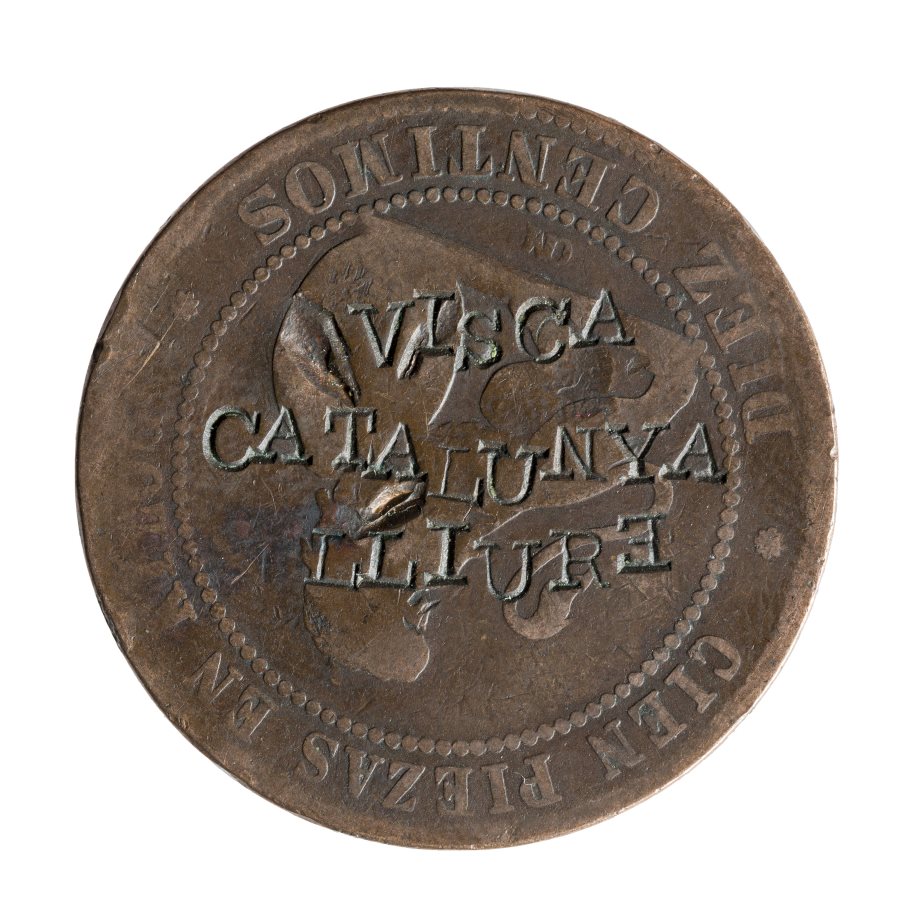
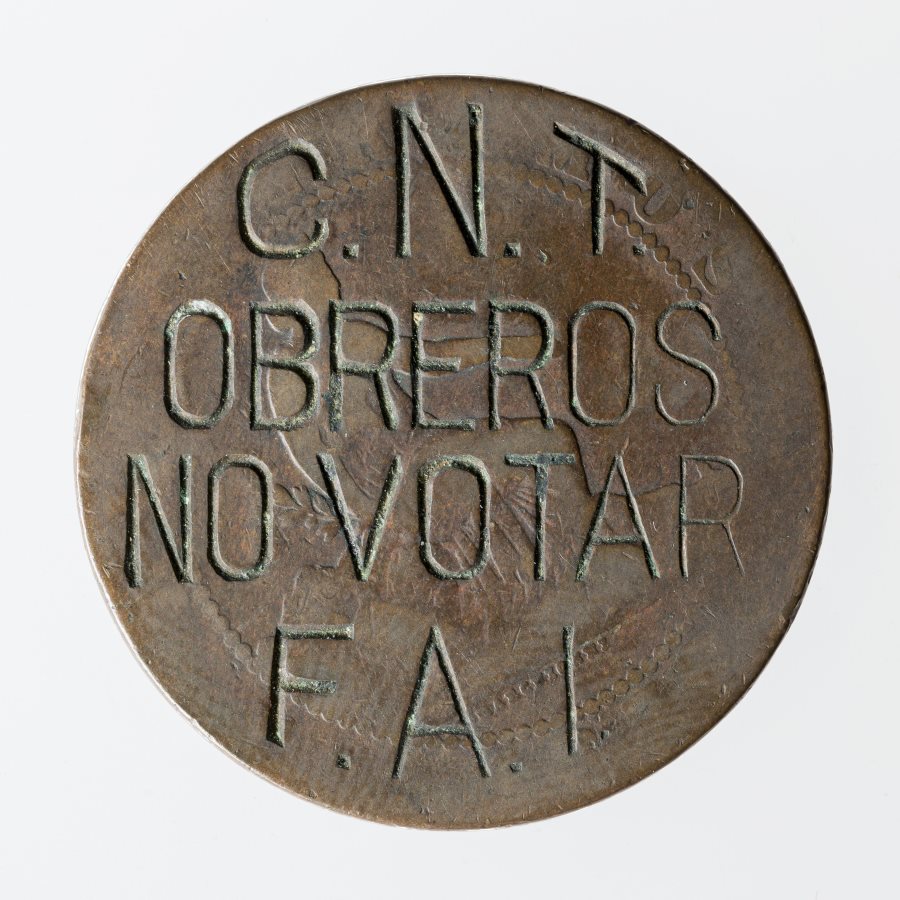
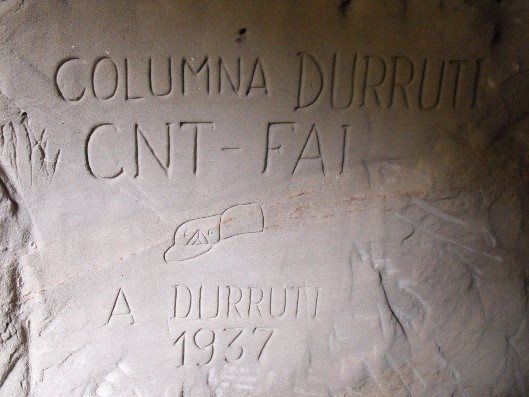

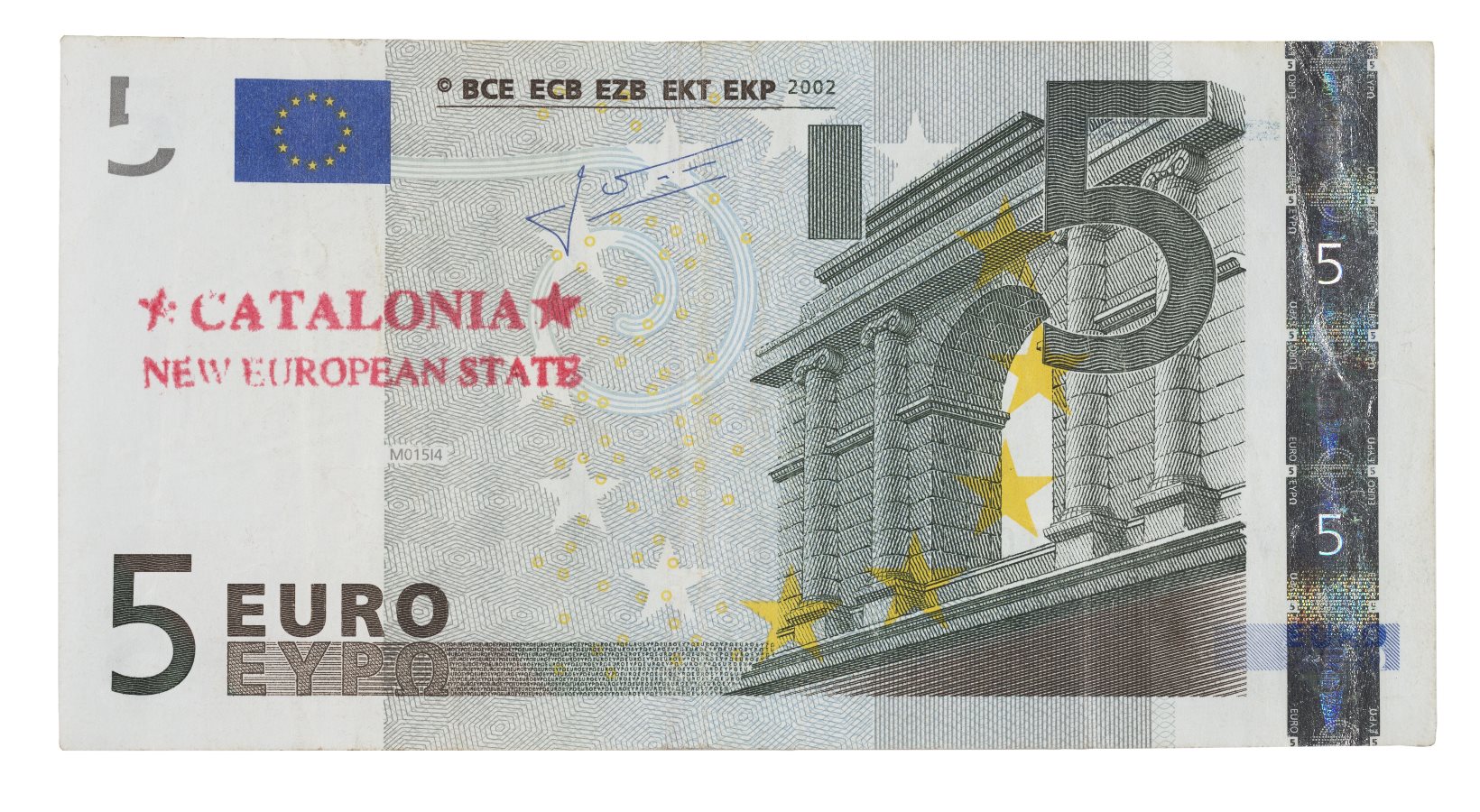







One comment
Very good note. I do not know this type of resealed. Until now I only knew the revolutionary American coins resealed by Spain and put into circulation in the Philippines